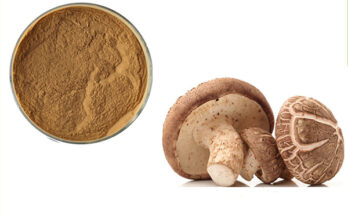Baby Fruit Puree Market refers to the segment of the food industry that produces and sells pureed fruit products specifically designed for infants and young children. Baby fruit purees are typically made by blending or mashing fruits into a smooth, easily consumable form, free from any added sugars or artificial additives. Parents and caregivers often introduce fruit purees to babies as a part of their weaning process, transitioning them from a diet solely based on breast milk or formula to solid foods.
These purees provide a convenient and nutritious option for infants, as they are rich in essential vitamins, minerals, and dietary fiber. The baby fruit puree market has experienced significant growth in recent years, driven by several factors. Firstly, there is a growing awareness among parents about the importance of providing healthy and natural food choices for their babies. As a result, there has been a shift towards organic and natural baby food products, including fruit purees.
Intense Competition The baby food industry is highly competitive, with numerous players vying for market share. Established brands, as well as new entrants, are continuously introducing innovative products to attract consumers. This intense competition puts pressure on baby fruit puree manufacturers to differentiate their offerings, maintain quality standards, and invest in effective marketing strategies.
Consumer Demand for Natural and Organic Products Parents are increasingly seeking natural and organic baby food products, including fruit purees, due to concerns about synthetic additives, pesticides, and genetically modified organisms (GMOs). Meeting this demand can be challenging for manufacturers who must source organic ingredients, maintain supply chain integrity, and comply with stringent organic certification requirements.
Seasonality and Sourcing Challenges The availability of fresh fruits for puree production is subject to seasonal variations. Manufacturers may face difficulties in sourcing specific fruits year-round, which can impact the consistency and availability of their products. This challenge requires effective supply chain management, including establishing strategic partnerships with growers and processors, and implementing preservation techniques such as freezing or canning.
Product Shelf Life and Preservatives Baby fruit purees typically have a limited shelf life due to their natural ingredients and lack of preservatives. Manufacturers need to carefully balance product freshness and safety with extended shelf life to meet consumer expectations. Developing effective preservation techniques or exploring alternative packaging solutions can be a challenge, as it requires investment in research and development.
Food Safety and Quality Assurance Maintaining stringent food safety standards and ensuring high-quality products is crucial in the baby food industry. Baby fruit purees must undergo rigorous testing and adhere to regulatory requirements. Manufacturers need to invest in robust quality control measures, including traceability systems, to ensure the safety and integrity of their products. Any lapse in quality assurance can lead to reputational damage and loss of consumer trust.
Packaging and Sustainability Packaging plays a vital role in preserving the freshness and quality of baby fruit purees. However, concerns about the environmental impact of single-use packaging have led to increased demand for sustainable packaging solutions. Manufacturers face the challenge of finding eco-friendly packaging options that are safe, convenient, and cost-effective while maintaining product integrity.
Click Here, To Get Free Sample Report: https://stringentdatalytics.com/sample-request/baby-fruit-puree-market/11137/
Market Segmentations:
Global Baby Fruit Puree Market: By Company
• Nestle
• Kraft Heinz
• Abbott Laboratories
• DANONE
• Hain Celestial
• Plum Organics
• Simple Truth
• Amara Baby Food
• Mamia
• Agusha
• Holle
• Rafferty’s Garden
• Rhodes Food Group
Global Baby Fruit Puree Market: By Type
• Stage 1
• Stage 2
• Stage 3
• Others
Global Baby Fruit Puree Market: By Application
• Supermarkets and Malls
• Online Retailers
• Brick and Mortar Retail Stores
• Others
Global Baby Fruit Puree Market: Regional Analysis
The regional analysis of the global Baby Fruit Puree market provides insights into the market’s performance across different regions of the world. The analysis is based on recent and future trends and includes market forecast for the prediction period. The countries covered in the regional analysis of the Baby Fruit Puree market report are as follows:
North America: The North America region includes the U.S., Canada, and Mexico. The U.S. is the largest market for Baby Fruit Puree in this region, followed by Canada and Mexico. The market growth in this region is primarily driven by the presence of key market players and the increasing demand for the product.
Europe: The Europe region includes Germany, France, U.K., Russia, Italy, Spain, Turkey, Netherlands, Switzerland, Belgium, and Rest of Europe. Germany is the largest market for Baby Fruit Puree in this region, followed by the U.K. and France. The market growth in this region is driven by the increasing demand for the product in the automotive and aerospace sectors.
Asia-Pacific: The Asia-Pacific region includes Singapore, Malaysia, Australia, Thailand, Indonesia, Philippines, China, Japan, India, South Korea, and Rest of Asia-Pacific. China is the largest market for Baby Fruit Puree in this region, followed by Japan and India. The market growth in this region is driven by the increasing adoption of the product in various end-use industries, such as automotive, aerospace, and construction.
Middle East and Africa: The Middle East and Africa region includes Saudi Arabia, U.A.E, South Africa, Egypt, Israel, and Rest of Middle East and Africa. The market growth in this region is driven by the increasing demand for the product in the aerospace and defense sectors.
South America: The South America region includes Argentina, Brazil, and Rest of South America. Brazil is the largest market for Baby Fruit Puree in this region, followed by Argentina. The market growth in this region is primarily driven by the increasing demand for the product in the automotive sector.
Visit Report Page for More Details: https://stringentdatalytics.com/reports/baby-fruit-puree-market/11137/
Objectives of Baby Fruit Puree Market Study:
- Market Size and Growth Analysis: Determine the current market size of the baby fruit puree market and analyze its historical growth patterns. This objective helps identify the market’s potential and understand its trajectory.
- Consumer Demographics and Preferences: Explore the target consumer segment for baby fruit puree, including their age group, income level, and geographic location. Understand their preferences, purchasing behavior, and factors influencing their buying decisions.
- Competitive Landscape: Assess the key players operating in the baby fruit puree market, including established brands and emerging players. Analyze their market share, product offerings, pricing strategies, distribution channels, and marketing tactics.
- Market Trends and Opportunities: Identify and analyze the latest trends, innovations, and developments in the baby fruit puree market. Determine potential growth opportunities, such as new product launches, flavors, packaging innovations, or expansion into new geographical markets.
- Regulatory Environment: Understand the regulatory framework and standards governing the baby food industry, specifically related to fruit puree products. Evaluate the impact of regulations on market entry barriers, labeling requirements, safety standards, and potential risks.
- Distribution Channels: Study the distribution channels used for baby fruit puree, including retail stores, online platforms, and direct sales. Assess the effectiveness of different channels and their potential for market expansion or penetration.
- Pricing Analysis: Analyze the pricing strategies adopted by companies in the baby fruit puree market. Evaluate pricing trends, pricing models (e.g., premium, mid-range, budget), and factors influencing pricing decisions, such as production costs, competition, and consumer willingness to pay.
- Brand Perception and Customer Satisfaction: Measure the brand perception and customer satisfaction levels associated with different baby fruit puree brands. Conduct surveys or focus groups to understand customer experiences, expectations, and areas for improvement.
- Market Entry Strategies: Develop insights and recommendations for businesses looking to enter or expand their presence in the baby fruit puree market. Identify potential entry barriers, competitive advantages, and effective marketing strategies.
- Market Forecasts and Projections: Provide forecasts and projections for the baby fruit puree market, including expected growth rates, market share, and revenue opportunities over a specified period. This objective helps stakeholders make informed business decisions.
About US:
Stringent Datalytics offers both custom and syndicated market research reports. Custom market research reports are tailored to a specific client’s needs and requirements. These reports provide unique insights into a particular industry or market segment and can help businesses make informed decisions about their strategies and operations.
Syndicated market research reports, on the other hand, are pre-existing reports that are available for purchase by multiple clients. These reports are often produced on a regular basis, such as annually or quarterly, and cover a broad range of industries and market segments. Syndicated reports provide clients with insights into industry trends, market sizes, and competitive landscapes. By offering both custom and syndicated reports, Stringent Datalytics can provide clients with a range of market research solutions that can be customized to their specific needs.
Contact US:
Stringent Datalytics
Contact No – +1 346 666 6655
Email Id – sales@stringentdatalytics.com



